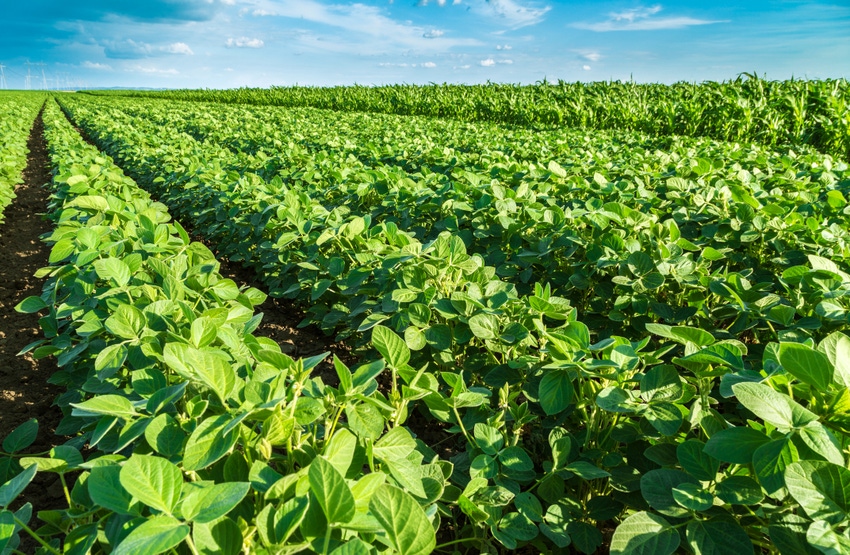
January soybean futures traded at the exclusive $12 technical target on November 23, 2020. Since then, January soybean futures attempted two more times to break through that $12 price point, but failed, creating a short term profit-taking setback to the downside.
Earlier this week prices lost close to $0.60 cents due to profit taking and news that South America would be receiving much needed precipitation.
Can prices turn back higher and trade above $12 per bu.?
Some historical context
If you recall this was the high price area from the summer of 2016. The news of lower U.S. production and strong export demand were the catalysts to bring soybeans futures to the $12 level. It would take another “perfect series of events” in soybean fundamentals to make soybeans climb above that level. That perfect series of events would be a combination of higher export demand on the upcoming USDA report, smaller U.S. and global soybean carryout on the upcoming USDA report, and a smaller than expected crop out of South America.
Watch next week’s USDA report
All eyes will be on USDA’s Dec. 10 report. Ending stocks for the 2020-21 season are already tight at 190 million bushels. For higher prices to occur, that ending stocks number needs to come down.
Next week’s report will shed light on one very important fundamental aspect for soybeans: export demand. Currently USDA has soybean exports pegged at 2.2 billion bushels. Looking at the strong pace of weekly export sales and shipments, many in the industry feel that export demand should reflect a higher value. Talk in the industry is that may be closer to 2.5 billion bushels.
It will be very interesting to see if the USDA adjusts the balance sheet in any capacity on this report, or if the agency will wait to do any additional adjusting until the January 2021 report.
What else will the trade be looking at in next week’s report? Global ending stocks, which have been sneaking lower in recent months. Current world ending stocks for soybeans are pegged at 86.52 million tonnes. Looking at the global picture, the big question will be if USDA lowers the Brazil production number.
South America’s weather
Over the past decade, South American soybean production has increased substantially due to a combination of more acres planted and better production capabilities. Nearly every year Brazil produces a new record crop. Will that be the case this year?
Due to late planting conditions and the imperfect start to their growing season, many doubt that record production this year is possible. Yet, on the November USDA report, Brazil production was estimated at a record133 million tonnes, up from 126 million last year.
Yes, Brazil has planted more land to soybeans -- but will the additional acres offset the shaky start to the growing season? Recent rains have benefitted the crop. However, soil conditions overall are parched with more extreme heat on the way.
Be ready for anything
As we have learned in 2020, markets can change on a dime. The longer term outlook for grains has shifted to friendly, but remember: bull markets need to be fed daily. And for $12-plus soybeans? Another “perfect series of events” needs to occur.
Reach Naomi Blohm: 800-334-9779 Twitter: @naomiblohm and [email protected]
Disclaimer: The data contained herein is believed to be drawn from reliable sources but cannot be guaranteed. Individuals acting on this information are responsible for their own actions. Commodity trading may not be suitable for all recipients of this report. Futures and options trading involve significant risk of loss and may not be suitable for everyone. Therefore, carefully consider whether such trading is suitable for you in light of your financial condition. No representation is being made that scenario planning, strategy or discipline will guarantee success or profits. Any decisions you may make to buy, sell or hold a futures or options position on such research are entirely your own and not in any way deemed to be endorsed by or attributed to Total Farm Marketing. Total Farm Marketing and TFM refer to Stewart-Peterson Group Inc., Stewart-Peterson Inc., and SP Risk Services LLC. Stewart-Peterson Group Inc. is registered with the Commodity Futures Trading Commission (CFTC) as an introducing broker and is a member of National Futures Association. SP Risk Services, LLC is an insurance agency and an equal opportunity provider. Stewart-Peterson Inc. is a publishing company. A customer may have relationships with all three companies. SP Risk Services LLC and Stewart-Peterson Inc. are wholly owned by Stewart-Peterson Group Inc. unless otherwise noted, services referenced are services of Stewart-Peterson Group Inc. Presented for solicitation
The opinions of the author are not necessarily those of Farm Futures or Farm Progress.
About the Author(s)
You May Also Like






